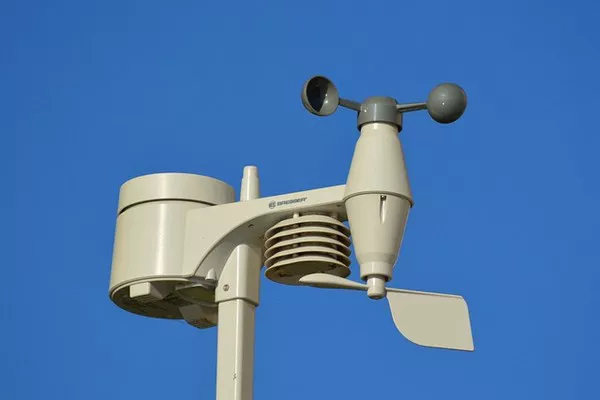Anemometers, devices designed to measure wind speed, play a crucial role in various fields, from meteorology and environmental monitoring to aviation and renewable energy. The accuracy of an anemometer is paramount in ensuring reliable data collection for these applications. This article delves into the factors influencing the accuracy of anemometers, the different types available, and the measures taken to enhance their precision.
Understanding Anemometers:
Anemometers come in various types, each employing distinct principles to measure wind speed accurately. The most common types include cup anemometers, vane anemometers, hot-wire anemometers, and sonic anemometers.
Cup Anemometers: Cup anemometers consist of three or four cups mounted on horizontal arms. As the cups rotate in the wind, their speed correlates with the wind speed, providing a measure of velocity. Despite their simplicity, variations in design and calibration can impact the accuracy of cup anemometers.
Vane Anemometers: Vane anemometers utilize a rotating vane that aligns itself with the wind direction. The angular velocity of the vane provides a measure of wind speed. While effective, vane anemometers may be influenced by friction, inertia, and the weight of the vane, affecting their precision.
Hot-Wire Anemometers: Hot-wire anemometers rely on the principle that the rate of heat loss from a wire immersed in the wind is proportional to the air velocity. These anemometers are highly sensitive but can be affected by factors such as temperature variations and wire aging, which may impact accuracy over time.
Sonic Anemometers: Sonic anemometers use ultrasonic pulses to measure wind speed. By analyzing the time taken for sound waves to travel between transducers in different directions, the instrument calculates wind speed and direction. Sonic anemometers are known for their high accuracy, especially in turbulent conditions.
Factors Influencing Accuracy:
Several factors contribute to the accuracy of anemometer readings, and understanding these elements is crucial for reliable wind measurement:
Calibration: Accurate calibration is fundamental to anemometer precision. Regular calibration against a reliable reference, such as a calibrated wind tunnel, ensures that the device provides accurate and consistent measurements over time.
Mounting and Location: The placement of anemometers significantly affects their accuracy. Instruments mounted on structures or near obstacles may experience wind distortion, impacting the reliability of the measurements. Ideally, anemometers should be installed in open, unobstructed areas to minimize interference.
Environmental Conditions: Temperature, humidity, and atmospheric pressure can influence anemometer performance. Some devices may come equipped with additional sensors to compensate for these environmental variables, ensuring accurate readings across a range of conditions.
Instrument Characteristics: The design, build quality, and materials used in anemometers can influence their accuracy. High-quality instruments with robust construction are more likely to provide accurate and consistent results over an extended period.
Maintenance: Regular maintenance is essential to uphold anemometer accuracy. Cleaning, lubrication, and inspection of moving parts help prevent wear and tear, ensuring the longevity and precision of the device.
Enhancing Accuracy:
While anemometers are inherently accurate instruments, technological advancements and ongoing research aim to further improve their precision. Some measures taken to enhance accuracy include:
Advanced Sensor Technology: Incorporating state-of-the-art sensor technology, such as laser-based anemometers or advanced ultrasonic sensors, contributes to improved accuracy and reliability, especially in challenging environmental conditions.
Data Fusion and Correction Algorithms: Modern anemometers often utilize sophisticated algorithms to correct for environmental variables and minimize errors. Data fusion techniques combine inputs from multiple sensors, providing a more accurate representation of wind conditions.
Remote Monitoring and Calibration: Remote monitoring capabilities allow for real-time assessment of anemometer performance. Additionally, remote calibration features enable adjustments without physical intervention, ensuring ongoing accuracy even in remote locations.
See Also: Does Temperature Affect Anemometer?A Comprehensive Analysis
Conclusion:
Anemometers play a pivotal role in measuring wind speed, providing essential data for a range of applications. While their accuracy is generally high, it is essential to consider factors such as calibration, mounting, environmental conditions, and instrument characteristics to ensure reliable measurements. Ongoing technological advancements continue to enhance the precision of anemometers, offering improved sensor technology, data correction algorithms, and remote monitoring capabilities. By understanding the intricacies of anemometer accuracy and implementing best practices, professionals in meteorology, environmental monitoring, and other fields can confidently rely on the data provided by these essential instruments.

